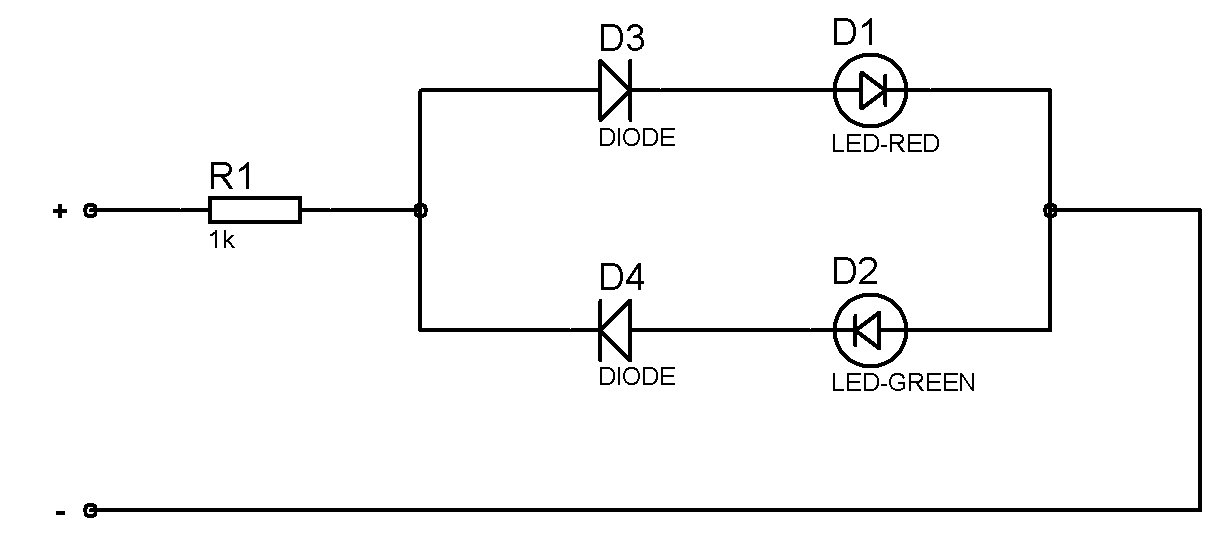Ever thought of opening an electronic circuit and not being able to detect the positive and negative terminals of a battery, in a moment that you don't have a multimeter for analysis?
With this in mind, we have decided to present a circuit capable of identifying the positive and negative terminals of a battery, for example. And for this, you will only use diodes and LED's.
In this video, you'll learn the circuit construction process presented in the article. Active the YouTube english subtitles for understand the explication.
Circuit PresentationIn this circuit presented in the Figure 1, is possible understand how the components are connected. Now, I'll explain how works the circuit for you.
The circuit of the Figure 1 was projected for when the Red LED will be up, the positive terminal of the battery will be in the + symbol of KRE connector and the negative terminal will be in the - symbol.
And, the otherwise, of the green LED is up, that significant that the terminals of battery are inverted. In other words, the + terminal of the battery will be in the in the - label and the - terminal of the battery will be in the + label.
If you connect a positive terminal of battery in the + label and the negative terminal in the point - label of the circuit, the D3 LED and D1 diode will be directly polarized.
Otherwise, if you connect a positive terminal of battery in the - label and the negative terminal in the point + label of the circuit, the D2 LED and D4 diode will be directly polarized.
Some people think that the circuit works only with two LEDs without the rectifier diodes 1N4001. But, is very important use the rectifier diodes. The D3 and D4 diodes are used to be offer a opened circuit to the LEDs, because don't is recommended use the LEDs in inversaly polarized condition, because the LEDs are very sensible, because its process doping process.
Acknowledment
The Silícios Lab thanks the PCBWay for partnership and you for read of our article. Thank you very much!
The Silícios Lab thanks UTSOURCE to offer the electronic components.















Comments
Please log in or sign up to comment.